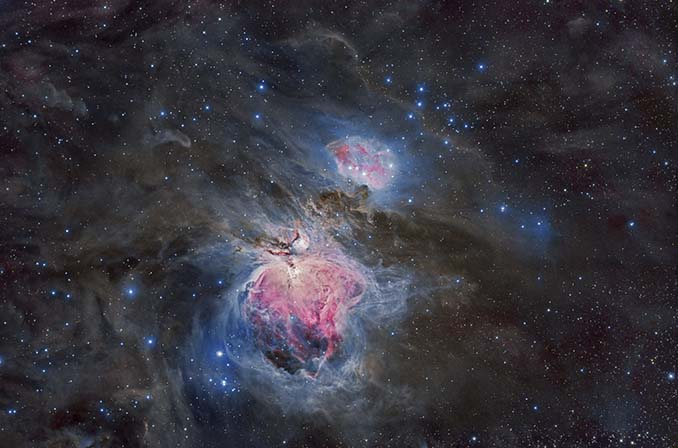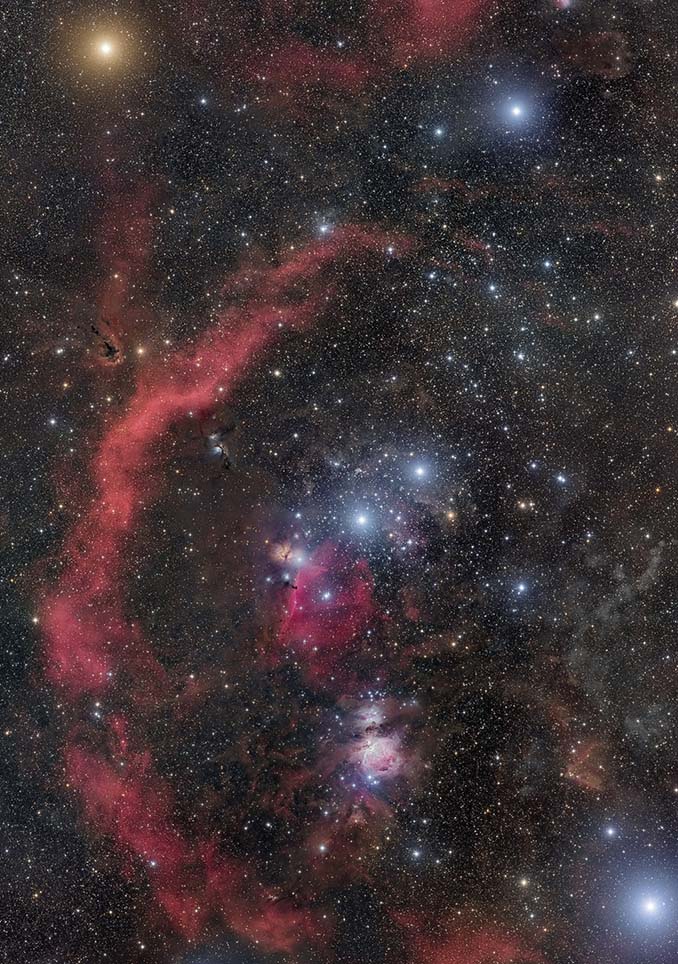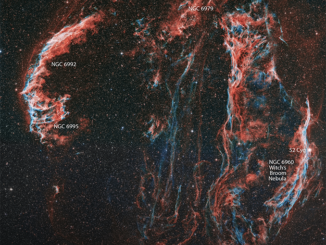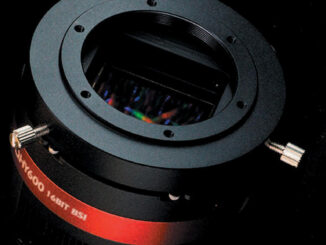
The Orion Nebula (Messier 42) is probably the most storied and observed deep-sky object of all. This big, bright and beautiful hotbed of ongoing star birth has the advantage of being very favourably placed to find with the naked eye as a fuzzy star-like patch of light in Orion’s Sword, which hangs from Orion’s belt of brilliant stars.
M42 is overwhelmingly the GoTo deep-sky object for fledgling observers, especially for those with a shiny new Christmas telescope, and, like a handful of other astronomical targets, it definitely won’t disappoint. It may be the most well-known nebula in the sky, but it doesn’t need any hyping as its fame never overshadows the majesty of its physical being or the unwavering thrill of seeing or imaging it.
The Orion Nebula is the archetypal galactic nebula and the largest site of on-going star formation within close proximity to our Solar System. This emission nebula, or H-II region is a prodigious stellar nursery, where new stars are being born within dusty cocoons. It spans around 24 light years across and lies a mere 1,340 light years away, virtually on our door step in cosmological terms. Messier 42 is more massive than other, closer star-forming regions, with a significantly larger reservoir of gas and dust to draw from, which makes it of supreme interest to professional astronomers.

Despite its size and magnificence, it’s not a secluded object but part of the giant Orion Molecular Cloud, a massive expanse of molecular hydrogen bestriding almost the entirety of the constellation of Orion.
As its name indicates, Messier 42 is located in the splendid winter constellation of Orion, the Hunter, an area of sky that’s overflowing with brilliant and colour nebulae of all shapes and sizes. The outline of Orion’s brightest stars, which include Betelgeuse and Rigel, is probably the most recognisable star pattern, or asterism, in the entire sky.
How to observe
The mighty constellation of Orion, the Hunter, straddles the southern meridian at about 10pm GMT. Other than powerhouses Rigel and Betelgeuse, its brightest stars, the line of three +bright stars, Mintaka (delta [d] Orionis, magnitude +2.2), Alnilam (epsilon [e] Ori, +1.7) and Alnitak (zeta [z] Ori, +1.7) orientated north-west to south-east midway between red-hued Betelgeuse to the north and blue-white Rigel further south, and together forming the famous ‘Belt’, is Orion’s most obvious naked-eye feature.
Look about four degrees due south from Alnilam and even on a less than pristine night the Hunter’s sword, formed from 42 Ori, theta Ori (actually two stars, theta1 and theta2), and iota Ori, should be apparent It’s clear that the middle star, theta, looks distinctly fuzzy; you’ve found the Orion Nebula. Theta 1 is the famous Trapezium, a superb multiple star that’s embedded within (see box below).
A pair of 10 x 50 binoculars reveals a spectacular scene, with the central half a degree or so of M42’s roughly one degree overall apparent diameter being faintly visible, along with Messier 43, a small detached circular patch of light just to the north (both M42 and M43 are part of the huge Orion A, or OMC-1 molecular cloud) and a sprinkling of magnitude +6 to +8 stars.
A small telescope firms up the nebula’s shape, looking like a giant fan in space. The wealth of detail seen grows dramatically through moderate- to large-aperture telescopes; I’ll never forget the first view of M42 I had through my eight-inch reflector, with swathes of nebulosity, glowing with a ghostly-green cast (colour is very-rarely seen visually in deep-sky objects), interspersed with numerous dark lanes. It radiates strongly in Oxygen–III, which produces its greenish hue, as well as in hydrogen-alpha, so always try using an O–III filter to enhance its coloration and structure.

Zoom-in on the Trapezium
The tight group of stars at M42’s core is the famous Trapezium (theta1 Ori), a multiple star system so named for its trapezoid of four bright stars. These are the brightest members of a cluster that’s home to an incredible 6,000 stars per cubic light year! They are young, hot and massive early-type stars that are still swathed in their birthing nebulosity, rendering them invisible to amateur instrumentation but uncloaked by professional infrared surveys.
However, just a modest 80mm refractor at 40x power can split theta1 into its four components. The stars are labelled A, B, C and D, with C being the brightest (magnitude +5.13) and most southerly lying. It is by far the dominant member, a class-O6 monster of over 40 solar masses which emits the vast majority of the cluster’s withering ultraviolet light. Components D and A are the next brightest, but are over a magnitude fainter at +6.3 and +6.6, respectively, and mark the are the more easterly and westerly stars. Located furthest north, star B is the faintest of the trapezoid, glowing at magnitude +8.
Stars A and B are the closest, with a separation of 8.7 arcseconds, with D and B the furthest apart at almost 20 arcseconds




